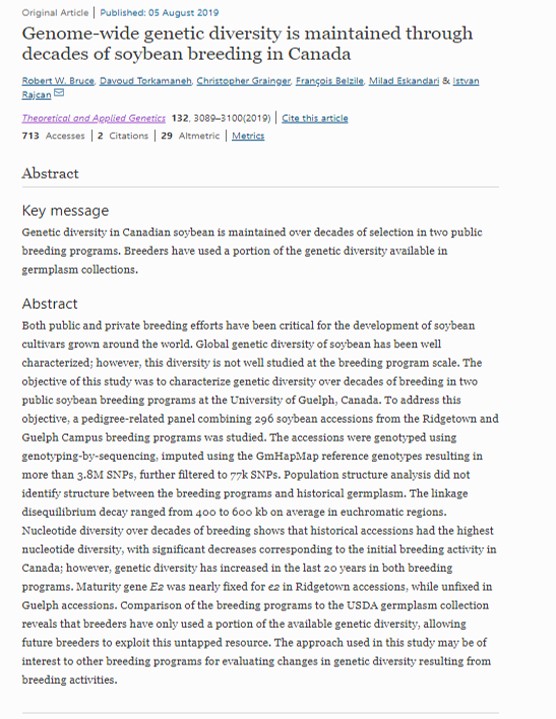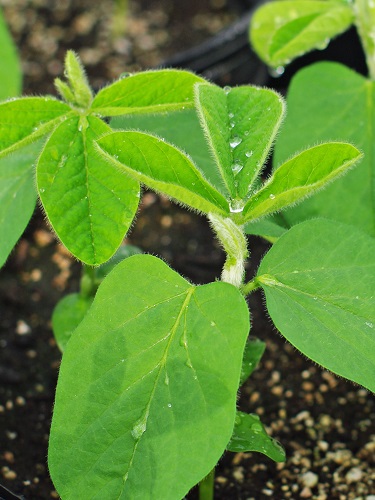Manuscripts

- Publication date : 2020-11-06
Reference
Bruce, R. W., Torkamaneh, D., Grainger, C. M., Belzile, F., Eskandari, M., Rajcan, I. 2020. Genome-wide genetic diversity is maintained through decades of soybean breeding in Canada. Theoretical and Applied Genetics.
Abstract
Key message
Genetic diversity in Canadian soybean is maintained over decades of selection in two public breeding programs. Breeders have used a portion of the genetic diversity available in germplasm collections.
Abstract
Both public and private breeding efforts have been critical for the development of soybean cultivars grown around the world. Global genetic diversity of soybean has been well characterized; however, this diversity is not well studied at the breeding program scale. The objective of this study was to characterize genetic diversity over decades of breeding in two public soybean breeding programs at the University of Guelph, Canada. To address this objective, a pedigree-related panel combining 296 soybean accessions from the Ridgetown and Guelph Campus breeding programs was studied. The accessions were genotyped using genotyping-by-sequencing, imputed using the GmHapMap reference genotypes resulting in more than 3.8M SNPs, further filtered to 77k SNPs. Population structure analysis did not identify structure between the breeding programs and historical germplasm. The linkage disequilibrium decay ranged from 400 to 600 kb on average in euchromatic regions. Nucleotide diversity over decades of breeding shows that historical accessions had the highest nucleotide diversity, with significant decreases corresponding to the initial breeding activity in Canada; however, genetic diversity has increased in the last 20 years in both breeding programs. Maturity gene E2 was nearly fixed for e2 in Ridgetown accessions, while unfixed in Guelph accessions. Comparison of the breeding programs to the USDA germplasm collection reveals that breeders have only used a portion of the available genetic diversity, allowing future breeders to exploit this untapped resource. The approach used in this study may be of interest to other breeding programs for evaluating changes in genetic diversity resulting from breeding activities.




